Hello again! With the resumption of my college semester I have began a hiatus from tournament play, although I hope this hiatus will be short lived. Instead, the next few blog posts (or at least the plan is when I have no personal recent tournaments to cover) will be devoted to some interesting games I have played in the past.
Which brings us to the a paraphrased quote from the title:
“How many moves ahead can you see?”
A funnily popular question, especially by casual enthusiasts to chess players. The question has produced equally entertaining answers, including the famous quip “Just one, but it’s always the best!” Nevertheless, this question is impossible to answer. There are endless parameters surrounding the task of calculation. I suppose a King+pawn vs. King endgame could be calculated 30 moves deep until Checkmate, but this doesn’t feel like an honest answer. I always thought that asking about calculation depth was comparable to someone asking a basketball player how many times he can do a crossover.
Nevertheless, I digress.
After all my rambling, I’m going to segue to an endgame that I played some years ago. I think this game showcases the furthest I’ve ever calculated, although once again the position is simplified and is surprisingly forcing. It’s not the most impressive bout, but at least the endgame has instructional value.
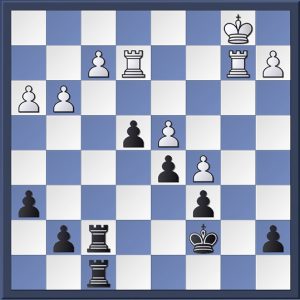
Here we have a double rook endgame that is visibly favorable for Black. White is reduced to passivity to due to the disparity between the activity of the Rooks. Aside from pressuring the f2 pawn, Black might also target the d4 or a2 pawn after Rf3 and a further rook swing. Nonetheless, despite the obvious advantages that Black possesses, it is not immediately clear how to break through. On top of this, Black needs to consider what White is going to do. How can White improve his position? First of all, White is prepared to defend all his weak pawns as the Rooks cover the 2nd rank pawns and can easily go to d2 and defend d4. Second of all, White is not looking to remain passive. With the plan of shooting the King over to e1, White will be ready to move his Rooks around to more noble goals, such as the B or A file. On the flip side, White has no other plan other bringing the King to e1, giving Black several moves to organize some kind of offensive. As mentioned, Black is doing a good job attacking the backwards f-pawn, but presently it is just not enough. Well, as the dictum goes, “You must create 2 weaknesses.” Armed with this age old advice, I played
33… g5!
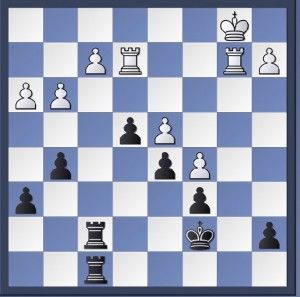
Pinpointing a surprise target in White’s camp: the h3 pawn! What could be Black’s plan? In the following moves, all is revealed. White will bring his King to e1 and Black will work on pressuring the h3-pawn. Although it may seem like a stretch, I had already calculated the finish of the game from this move onward.
34. Kc1 h5!
35. Kd1 h4
36. gxh4 gxh4
37. Ke1 Rf3
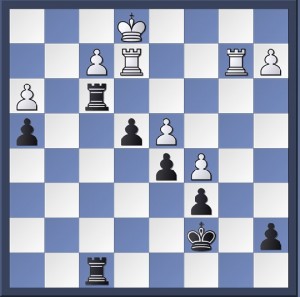
Both sides have achieved their plans. Black has succeeded in exposing the h3 pawn, and White has brought his King to e1 and is able to activate his rooks. Here, White obviously banks on the rooks’ newfound mobility as otherwise he will just lose a pawn.
38. Rb3 Rxb3
39. axb3 Rf3
40. Re3
White has avoided material losses and has taken off a lot of pressure from his position, but…
40… Rxe3!
It turns out that the pawn endgame is problem!
41. fxe3
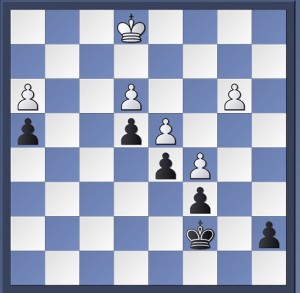
41… Kb7
42. Kd2 Ka6
43. Kc3 Kb5
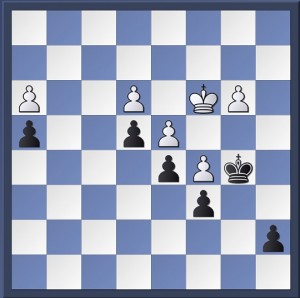
Now this pawn endgame is converted with the help of some good old fashioned flanking with a sprinkle of waiting moves.
44. Kc2 Kb4
45. Kb2 a6!
46. Kc2 Ka3
47. Kc3 a5!
48. Kc2 Ka2
49. Kc3 Kb1
50. b4 a4
and White resigned 0-1
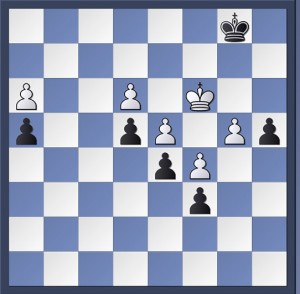
Naturally, the game could have continued with: 51. b5 a3 52. b6 a2 53. b7 a1=Q+, and Black gets an easy win because of one tempo.
So there we have it, from 33…g5 to 51. Resigns, Black had the whole thing planned. Without shame, this could be extended to 53…a1=Q+ (although we will refrain to further adding moves 54. Kd2 Qb2+ and such…) so we have an example of a 20 move deep calculation. Can I now answer the title question with “20 moves without fail”…? Likely not, but nonetheless this endgame brings back pleasant memories even to this day.
Until next time!